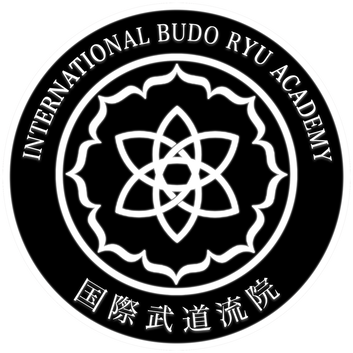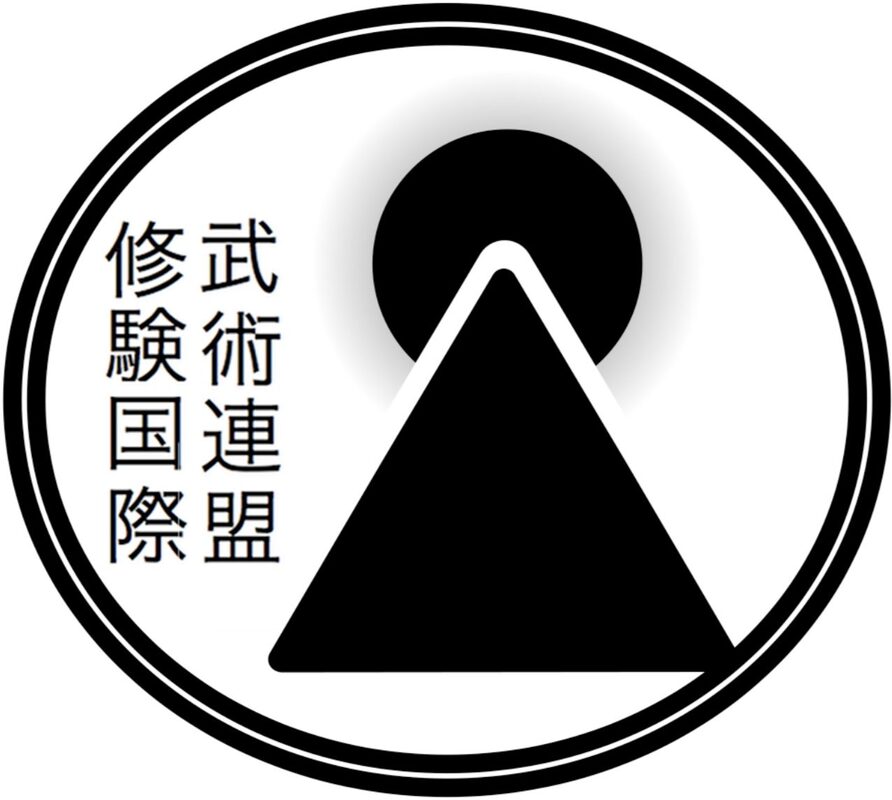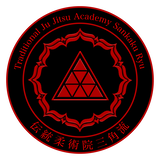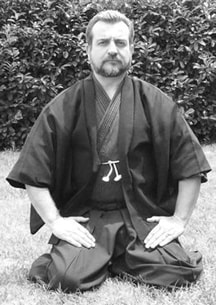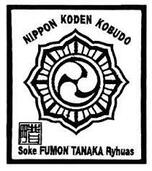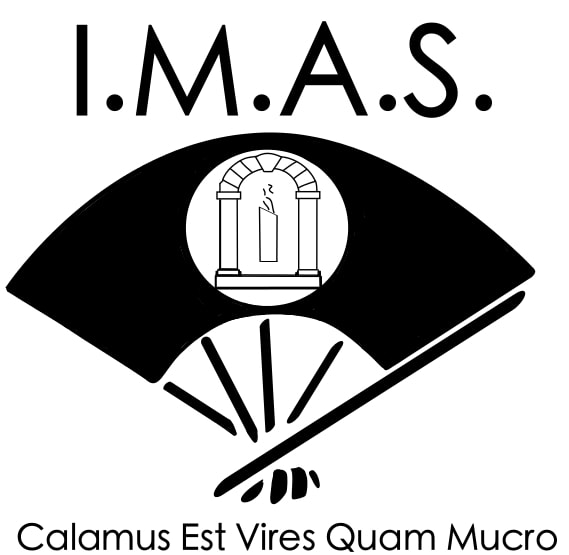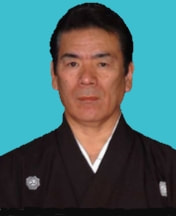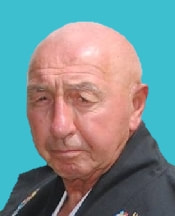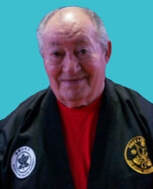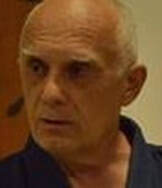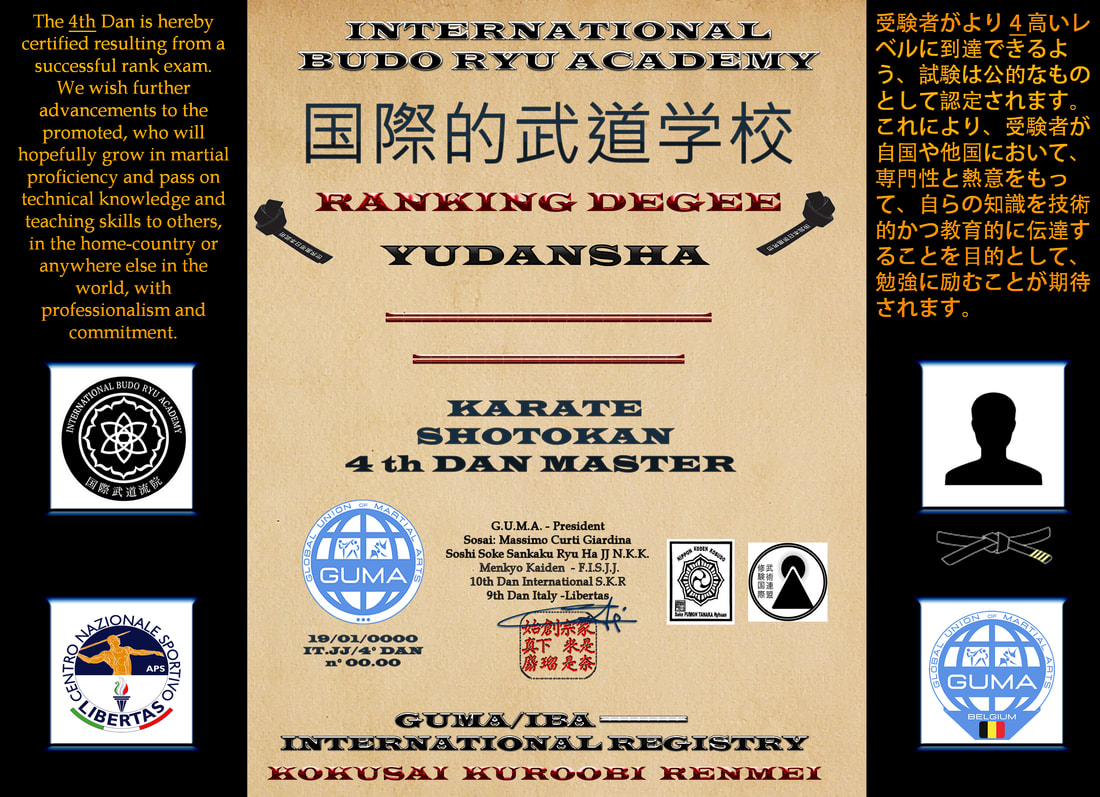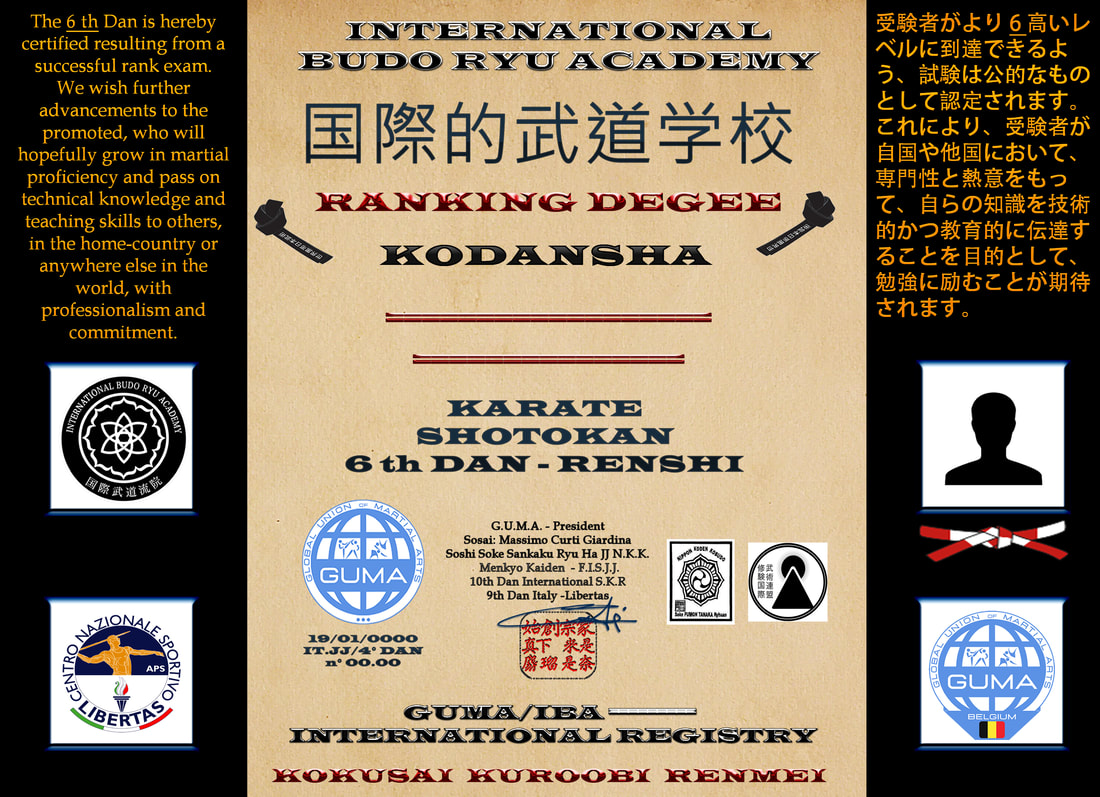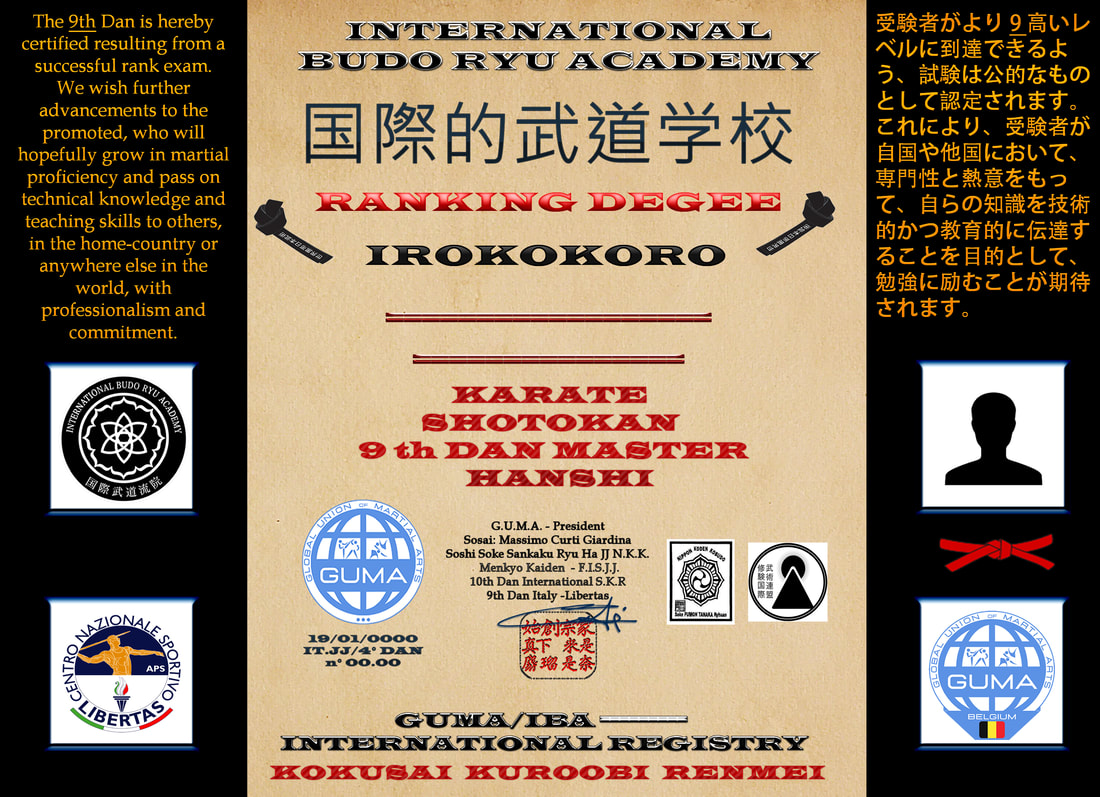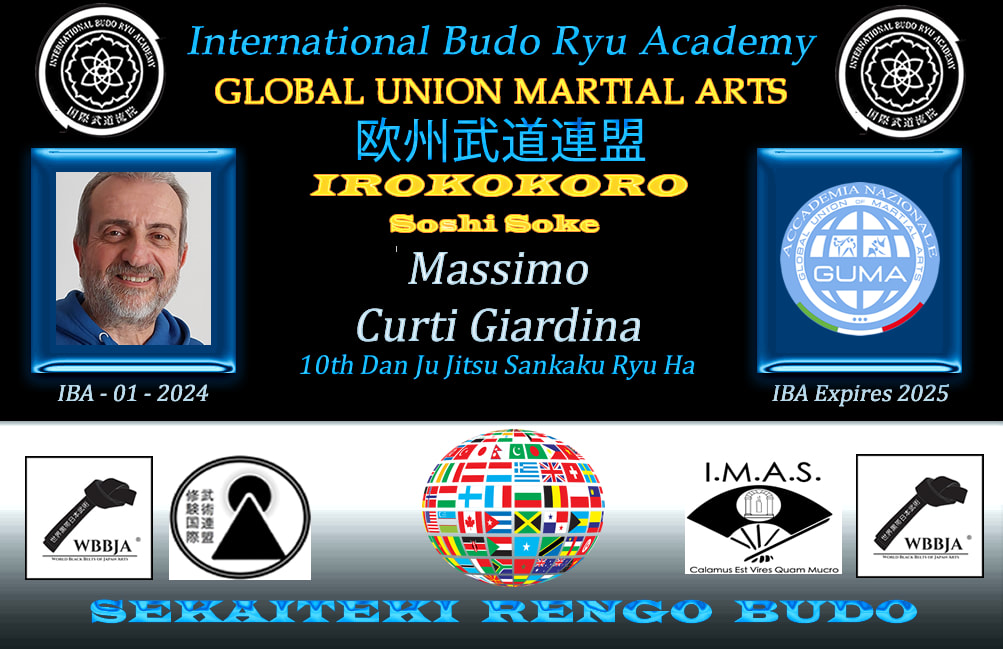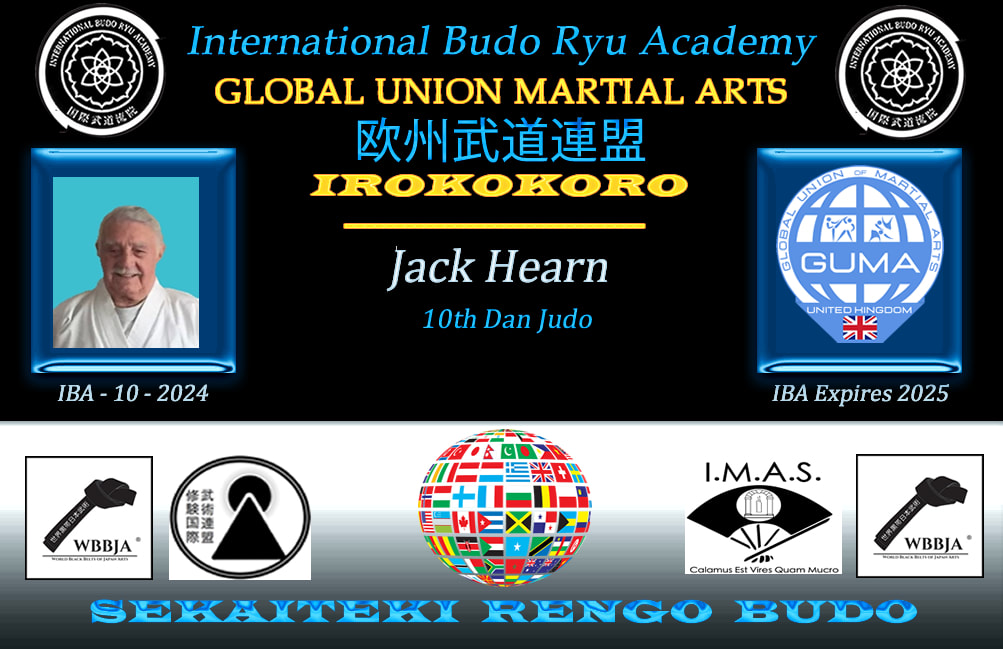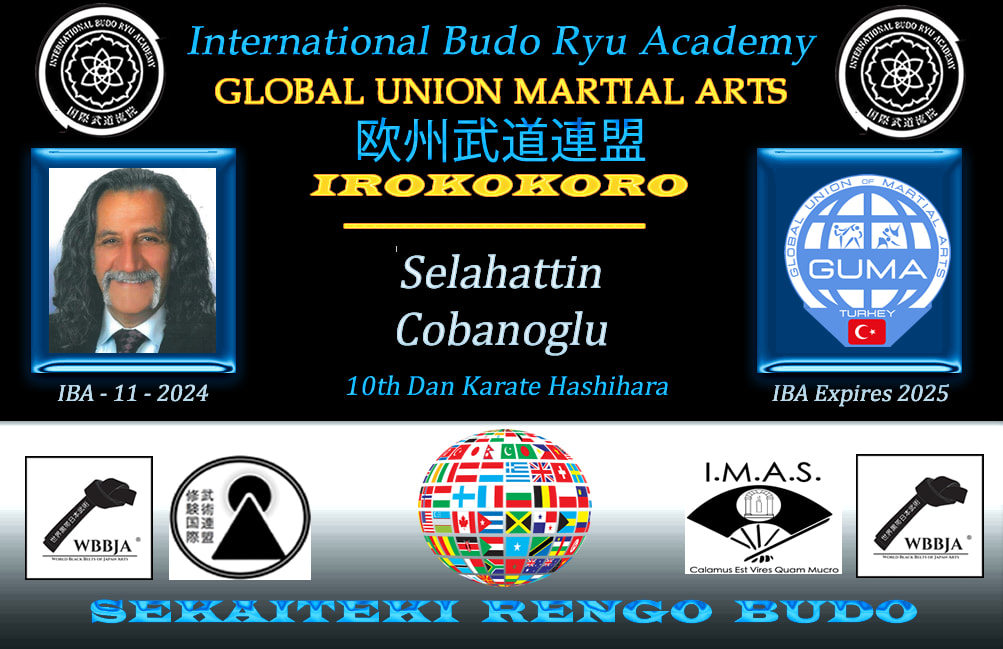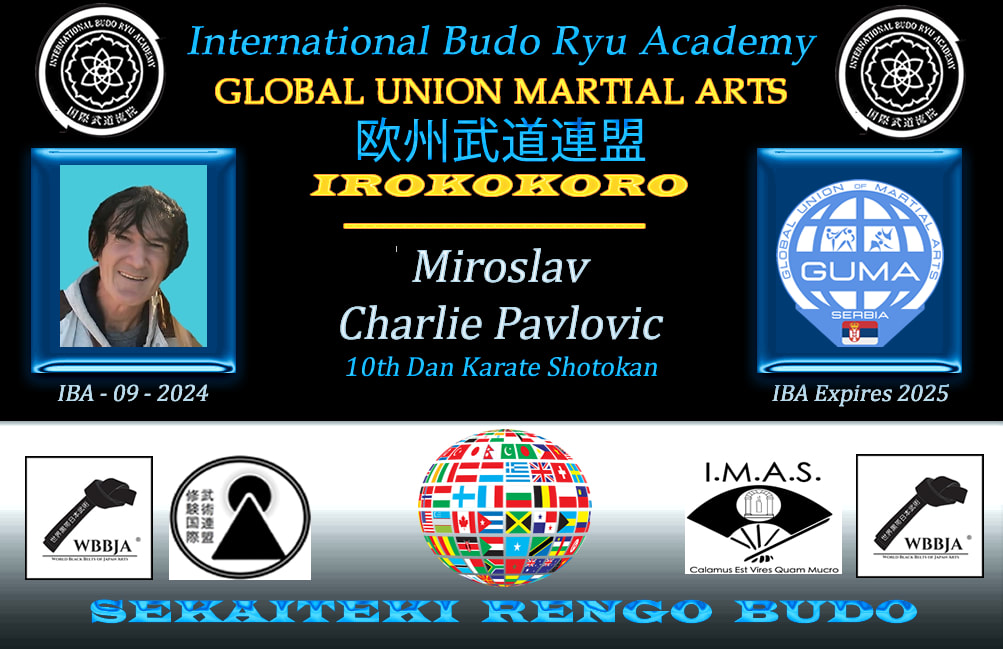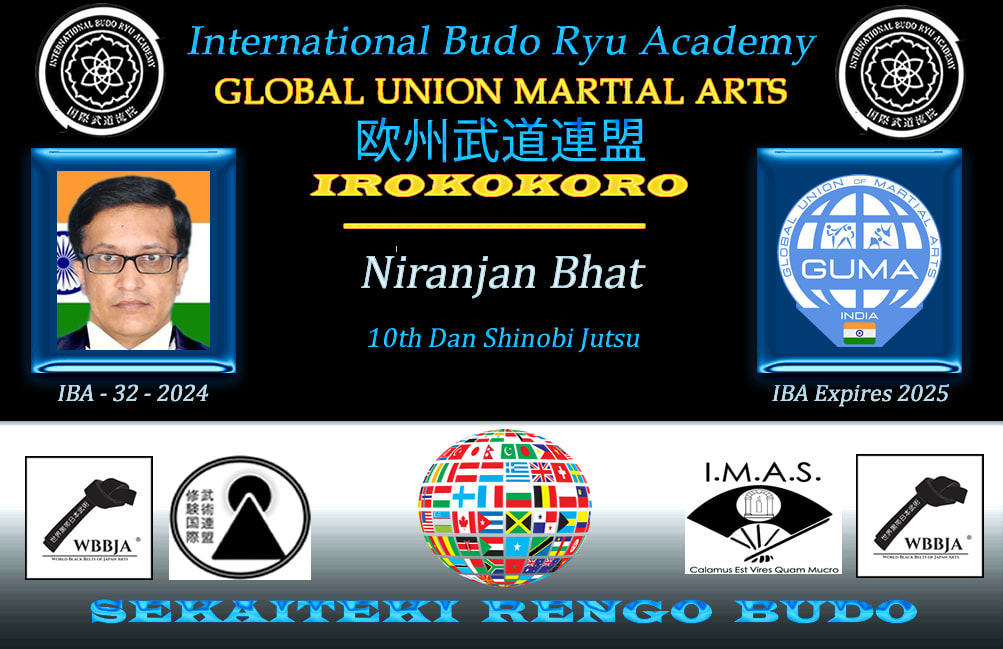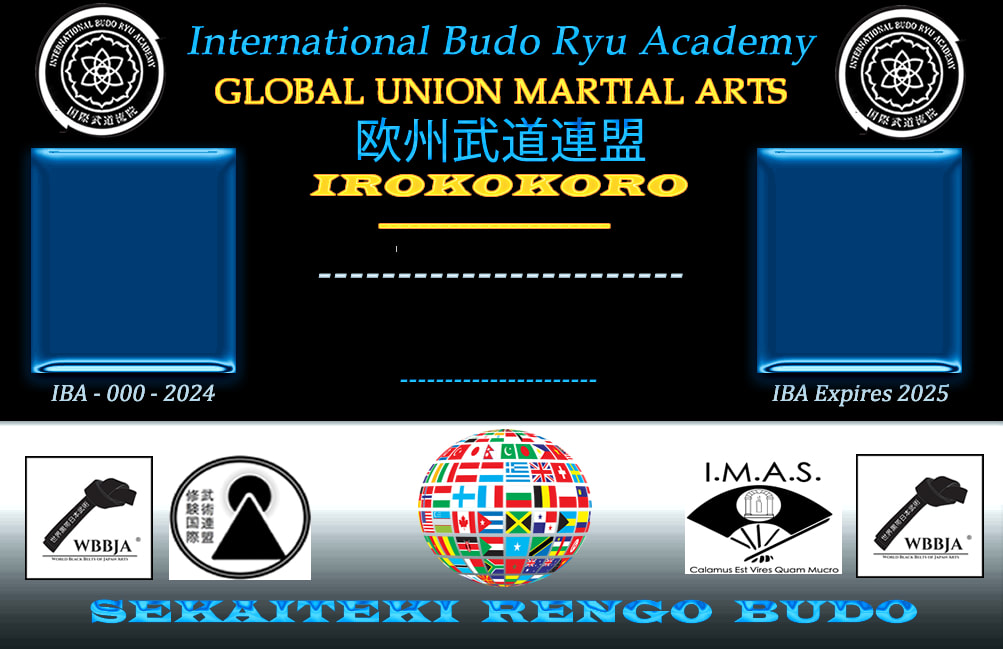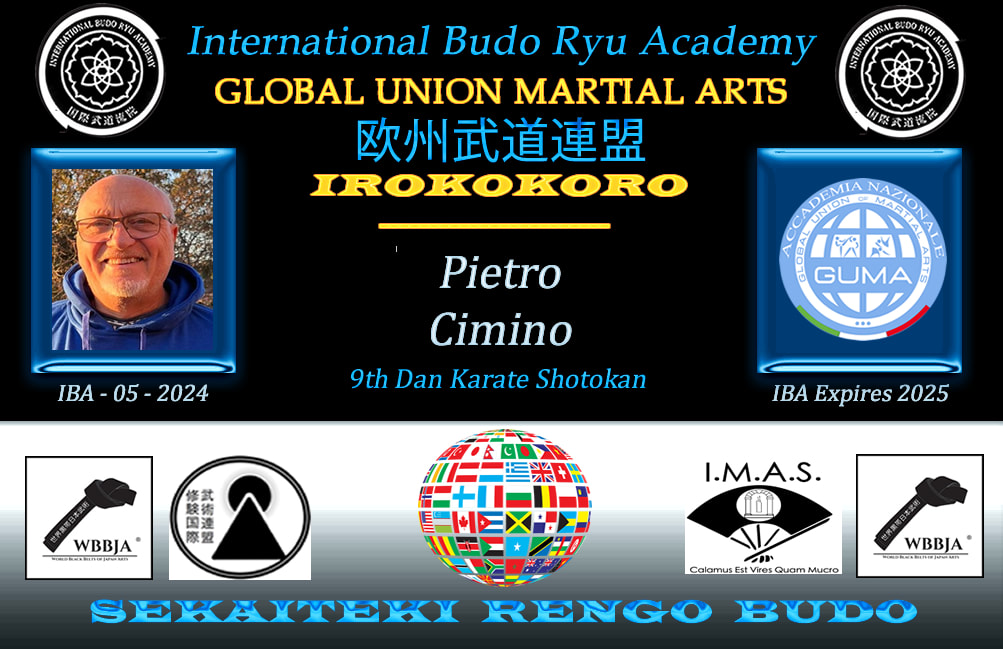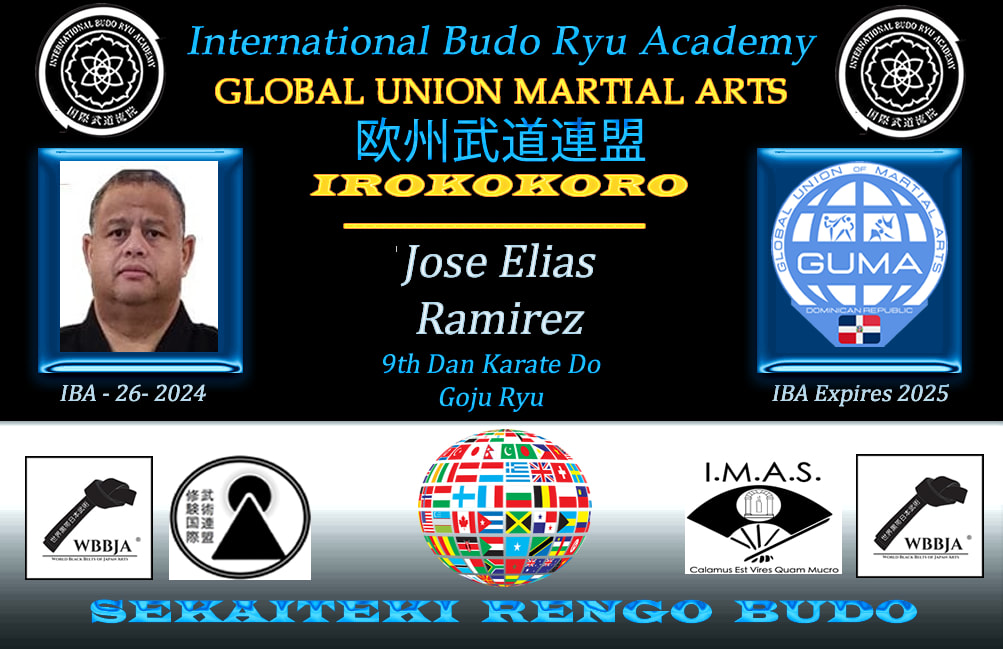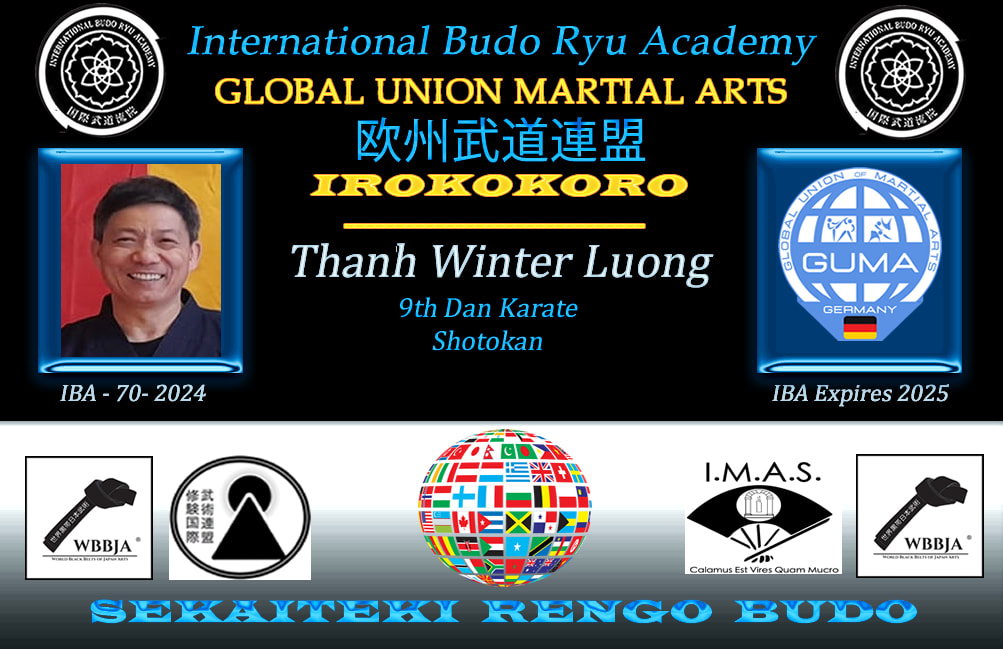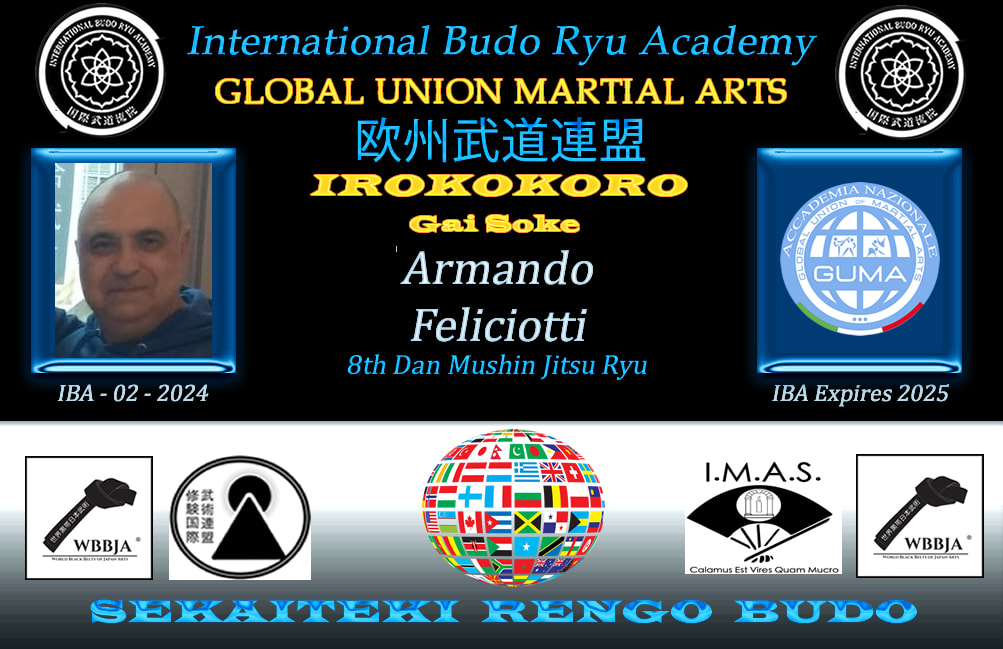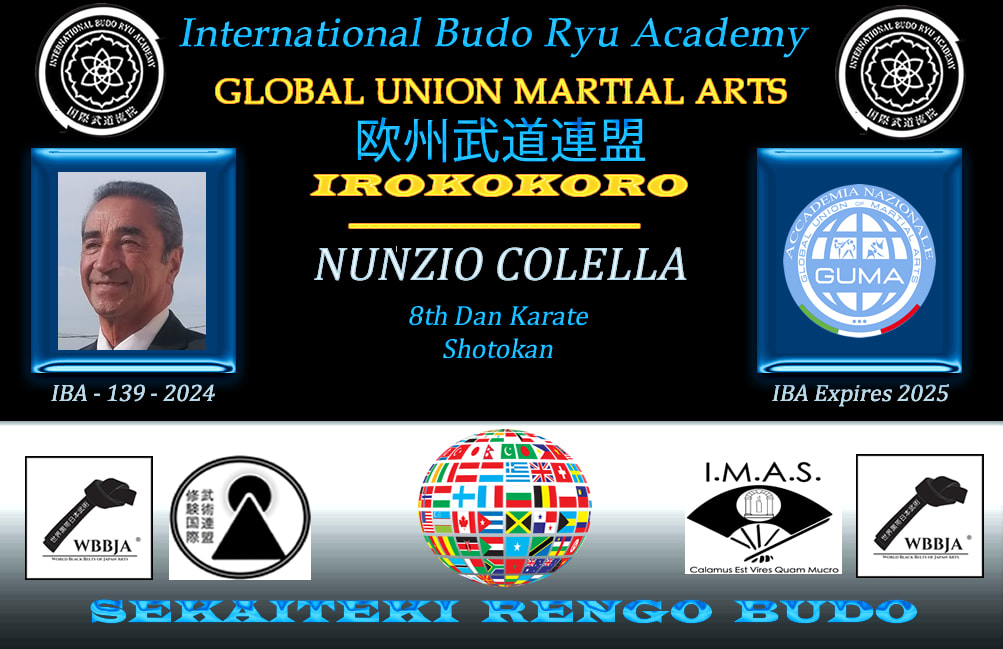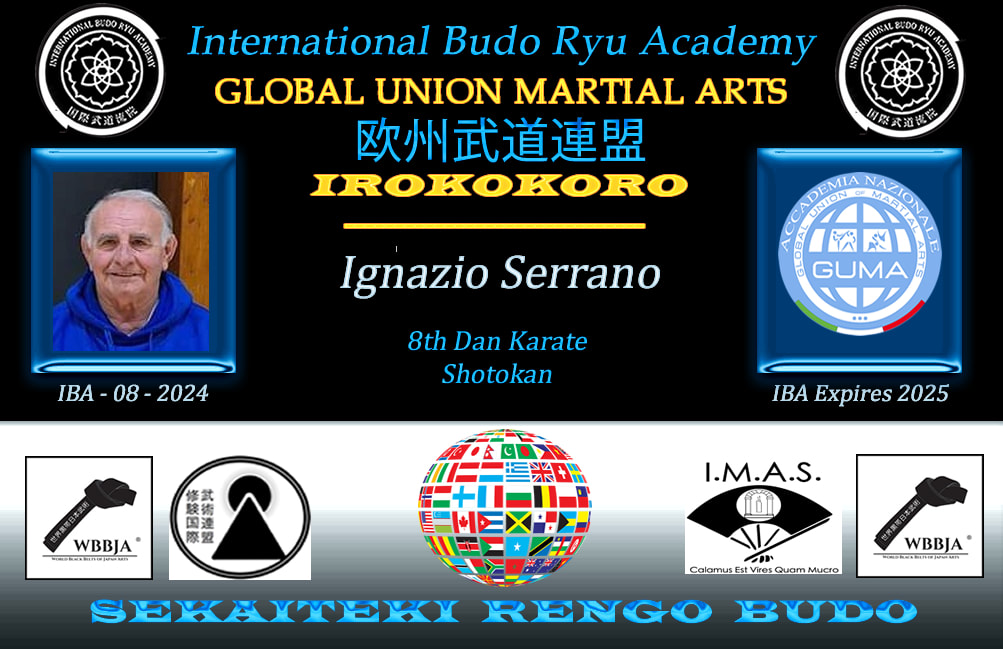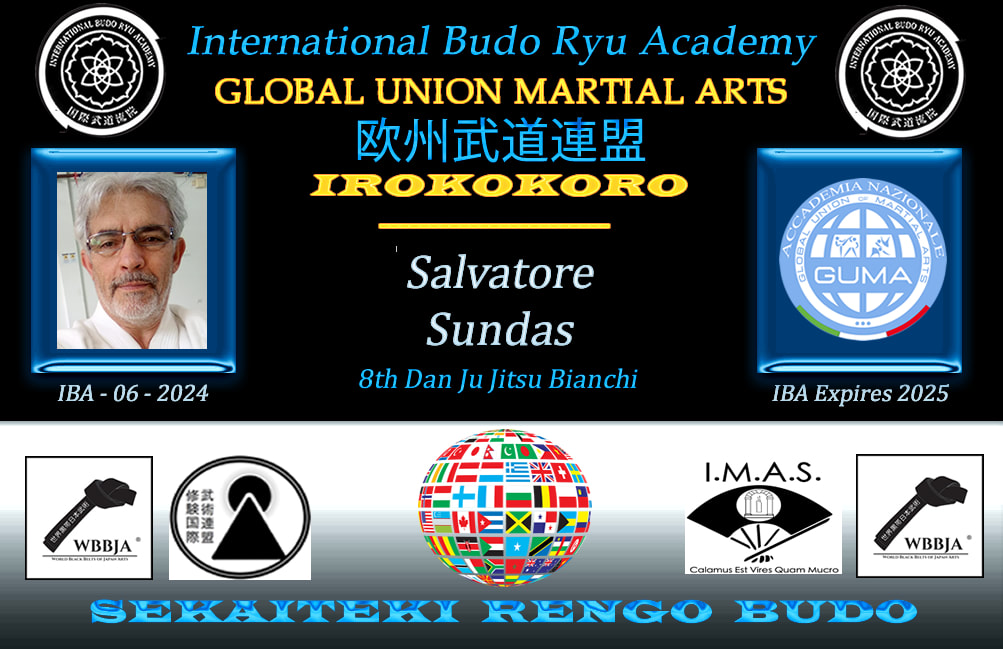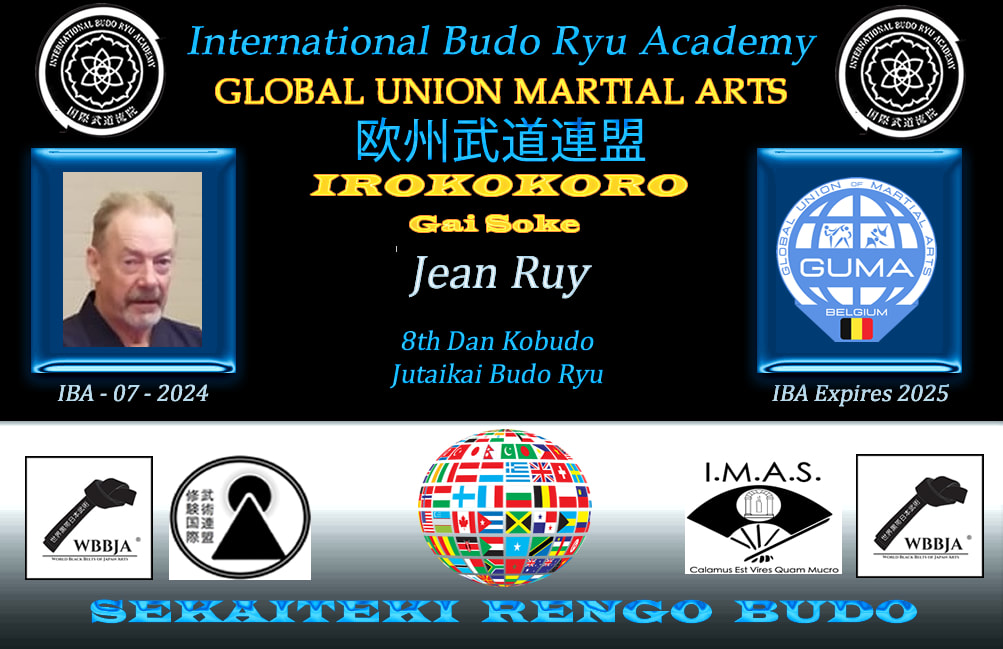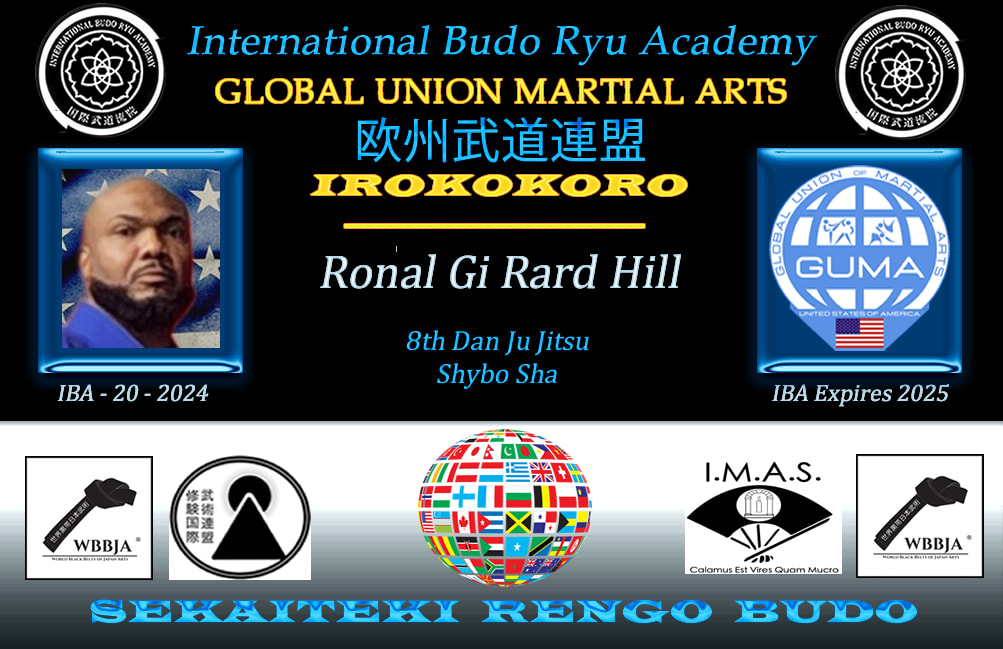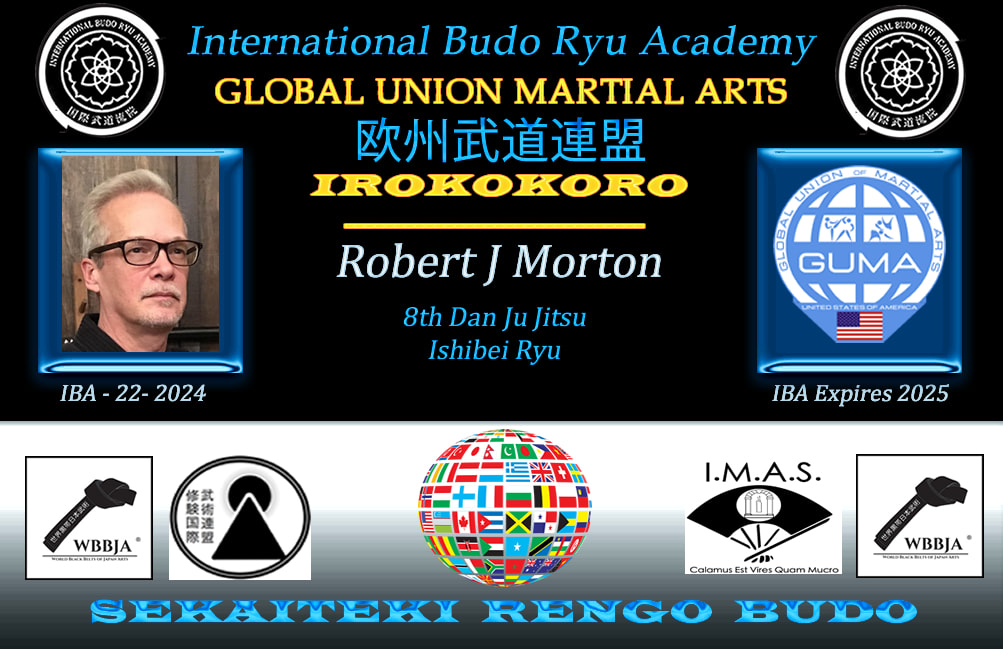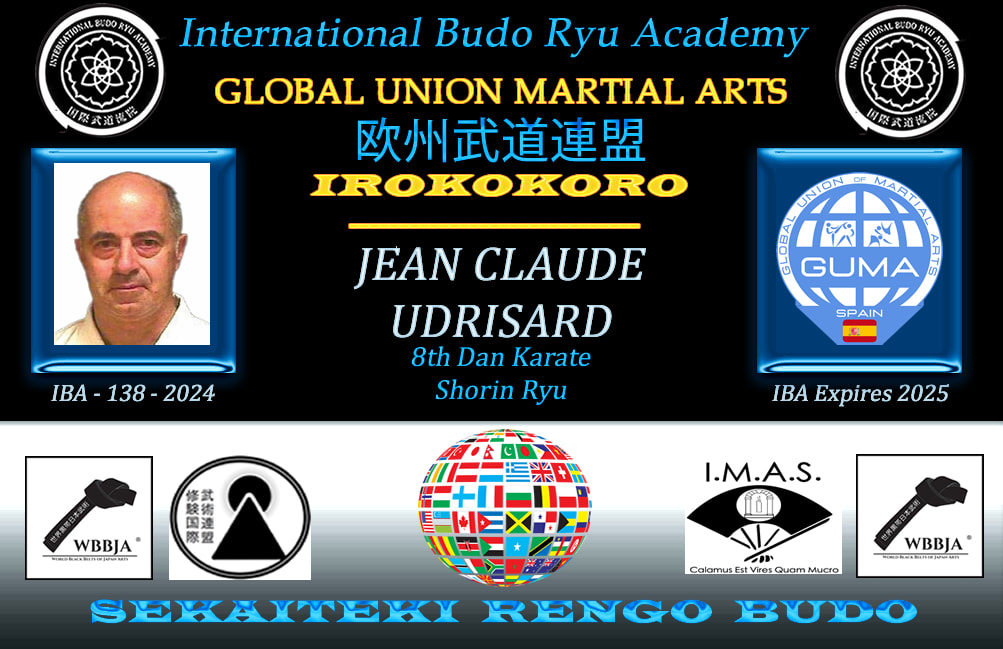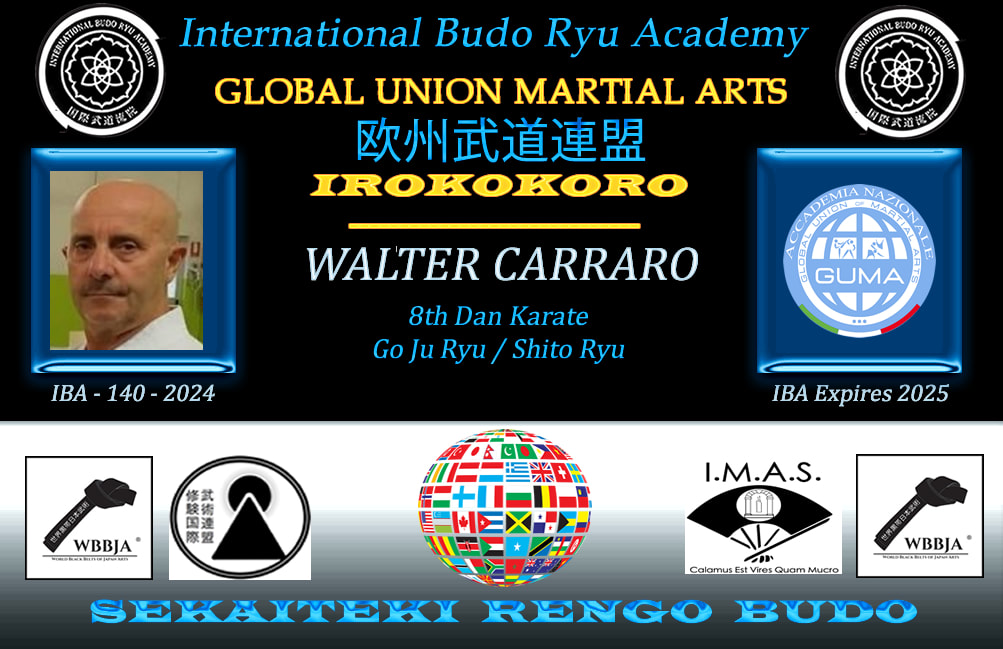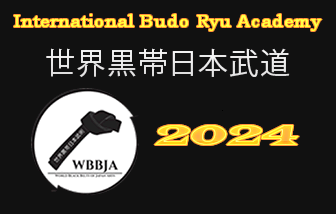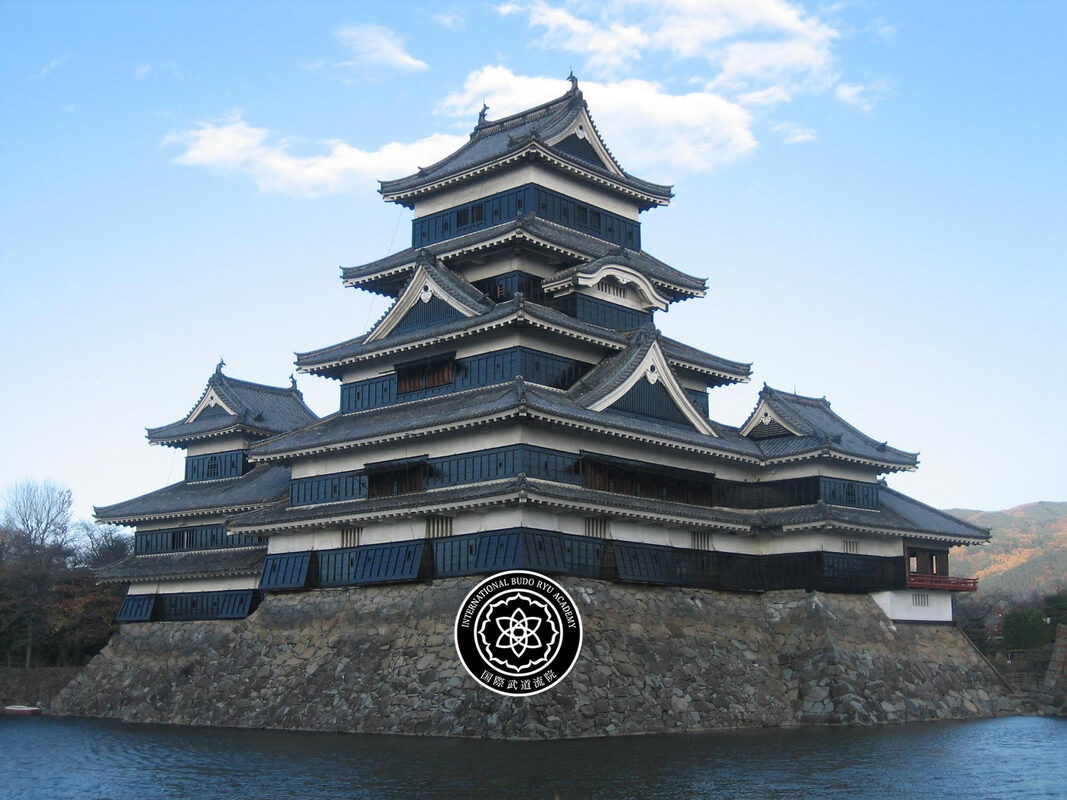INTERNATIONAL BUDO RYU ACADEMY
国 際 武 道 流 院 国 際 武 道 流 院 国 際 武 道 流 院
Soshi Soke
Massimo Curti Giardina
Fondatore della Sankaku Ryu Ha Ju Jitsu nel 1993, Menkyo Kaiden nel 2004 e Soshi Soke nel 2005, opera fattivamente in ambito Internazionale come 10th Dan e in Italia come 9° Dan presso l'Ente Nazionale Libertas, curando il Dipartimento Nazionale del settore Ju Jitsu. In qualità di Presidente protempore del GLOBAL UNION MARTIAL ARTS, ripristina la International Budo Ryu Academy, da lui fondata e presieduta precedentemente come Associazione Culturale. L'International Budo Ryu Academy opera all'interno della GUMA, occupandosi esclusivamente del settore tradizionale Giapponese. La Global Union Martial Arts, come prestabilito dal suo Statuto, accetta le richieste di Associazione da parte delle ASD operanti sul territorio Italiano. Queste vengono automaticamente trasmesse e inquadrate presso l'Ente di Promozione Libertas, con registrazione C.O.N.I.. La GUMA , fuori dal territorio italiano, accetta le Adesioni delle cinture nere che praticano esclusivamente arti marziali giapponesi.
^^^^^^^^^^^^^^^^^^^^^^^^^^^^^^^^^^^^^^^^^^^^^^^^^^^^^^^
Soshi Soke
Massimo Curti Giardina
Founder of Sankaku Ryu Ha Ju Jitsu in 1993, Menkyo Kaiden in 2004 and Soshi Soke in 2005, he actively operates in the international arena as 10th Dan and in Italy as 9th Dan at the Ente Nazionale Libertas, taking care of the National Department of the Ju Jitsu sector . As pro tempore President of the GLOBAL UNION MARTIAL ARTS, he restores the International Budo Ryu Academy, which he founded and previously presided over as a Cultural Association. The International Budo Ryu Academy operates within GUMA, dealing exclusively with the traditional Japanese sector. The Global Union Martial Arts, as established by its Statute, accepts requests for Association from the ASDs operating on the Italian territory. These are automatically transmitted and placed at the Libertas Promotion Body, with C.O.N.I. registration. GUMA, outside Italian territory, accepts the membership of black belts who practice exclusively Japanese martial arts.
I.B.A. : JAPANESE MARTIAL ARTS SECTOR
HOMBU-HA CONTACTS (MAIN OFFICE)
[email protected]
Massimo Curti Giardina
Fondatore della Sankaku Ryu Ha Ju Jitsu nel 1993, Menkyo Kaiden nel 2004 e Soshi Soke nel 2005, opera fattivamente in ambito Internazionale come 10th Dan e in Italia come 9° Dan presso l'Ente Nazionale Libertas, curando il Dipartimento Nazionale del settore Ju Jitsu. In qualità di Presidente protempore del GLOBAL UNION MARTIAL ARTS, ripristina la International Budo Ryu Academy, da lui fondata e presieduta precedentemente come Associazione Culturale. L'International Budo Ryu Academy opera all'interno della GUMA, occupandosi esclusivamente del settore tradizionale Giapponese. La Global Union Martial Arts, come prestabilito dal suo Statuto, accetta le richieste di Associazione da parte delle ASD operanti sul territorio Italiano. Queste vengono automaticamente trasmesse e inquadrate presso l'Ente di Promozione Libertas, con registrazione C.O.N.I.. La GUMA , fuori dal territorio italiano, accetta le Adesioni delle cinture nere che praticano esclusivamente arti marziali giapponesi.
^^^^^^^^^^^^^^^^^^^^^^^^^^^^^^^^^^^^^^^^^^^^^^^^^^^^^^^
Soshi Soke
Massimo Curti Giardina
Founder of Sankaku Ryu Ha Ju Jitsu in 1993, Menkyo Kaiden in 2004 and Soshi Soke in 2005, he actively operates in the international arena as 10th Dan and in Italy as 9th Dan at the Ente Nazionale Libertas, taking care of the National Department of the Ju Jitsu sector . As pro tempore President of the GLOBAL UNION MARTIAL ARTS, he restores the International Budo Ryu Academy, which he founded and previously presided over as a Cultural Association. The International Budo Ryu Academy operates within GUMA, dealing exclusively with the traditional Japanese sector. The Global Union Martial Arts, as established by its Statute, accepts requests for Association from the ASDs operating on the Italian territory. These are automatically transmitted and placed at the Libertas Promotion Body, with C.O.N.I. registration. GUMA, outside Italian territory, accepts the membership of black belts who practice exclusively Japanese martial arts.
I.B.A. : JAPANESE MARTIAL ARTS SECTOR
HOMBU-HA CONTACTS (MAIN OFFICE)
[email protected]
HONORARY MEMBERS
国 際 武 道 流 院 - 国 際 武 道 流 院
国 際 武 道 流 院 - 国 際 武 道 流 院
REGISTRATION 2024
DAL 2024 LA GLOBAL UNION OF MARTIAL ARTS
In convenzione con l'Ente Sportivo Nazionale Italiano "LIBERTAS"
GUMA darà la possibilità a tutte le Cinture Nere europee di richiedere il Diploma dell'Accademia Internazionale Budo Ryu con la Tessera Tecnica ed eventualmente anche l'Attestato Nazionale Italiano presso l'Ente Sportivo Libertas. Rendendo così ufficiale la loro posizione marziale in Europa. Tutte le cinture nere Yudansha - Kodansha e Irokokoro che praticano Arti Marziali Giapponesi possono richiedere la registrazione al GUMA/Libertas in Europa.
=================================================
FROM 2024 THE GLOBAL MARTIAL ARTS UNION
In agreement with the Italian National Sports Authority "LIBERTAS"
GUMA will give all European Black Belts the opportunity to request the Diploma from the International Budo Ryu Academy with the Technical Card and possibly also the Italian National Certificate from the Libertas Sports Authority. Thus making their martial position in Europe official. All Yudansha - Kodansha and Irokokoro black belts practicing Japanese Martial Arts can apply for registration with GUMA/Libertas in Europe.
In convenzione con l'Ente Sportivo Nazionale Italiano "LIBERTAS"
GUMA darà la possibilità a tutte le Cinture Nere europee di richiedere il Diploma dell'Accademia Internazionale Budo Ryu con la Tessera Tecnica ed eventualmente anche l'Attestato Nazionale Italiano presso l'Ente Sportivo Libertas. Rendendo così ufficiale la loro posizione marziale in Europa. Tutte le cinture nere Yudansha - Kodansha e Irokokoro che praticano Arti Marziali Giapponesi possono richiedere la registrazione al GUMA/Libertas in Europa.
=================================================
FROM 2024 THE GLOBAL MARTIAL ARTS UNION
In agreement with the Italian National Sports Authority "LIBERTAS"
GUMA will give all European Black Belts the opportunity to request the Diploma from the International Budo Ryu Academy with the Technical Card and possibly also the Italian National Certificate from the Libertas Sports Authority. Thus making their martial position in Europe official. All Yudansha - Kodansha and Irokokoro black belts practicing Japanese Martial Arts can apply for registration with GUMA/Libertas in Europe.
Apply to Join IBA Application Form is provided.
[email protected]
[email protected]
2024 ISCRIZIONE - ADESION 2024
International Budo Ryu Academy
国 際 武 道 流 院 国 際 武 道 流 院 国 際 武 道 流 院
Upon explicit request - International Diploma
YUDANSHA - KODANSHA - IROKOKORO
Upon explicit request - International Diploma
YUDANSHA - KODANSHA - IROKOKORO
CARD IBA 2024
ATTENZIONE!
L'International Budo Ryu Academy rilascerà Diplomi e Tessere solo a chi pratica una delle 34 Arti Marziali Giapponesi incluse nella lista IBA
DOMANDA DI DIPLOMA e IBA CARD (Guma/Libertas 2024)
Yudansha 1°/4° Dan € 60,00 - Kodansha 5°/7° Dan € 70,00 - IROKOKORO 8°/10° Dan € 90,00 -
I titolari del diploma e della tessera IBA potranno richiedere il rinnovo annuale della tessera versano un contributo di € 30,00.
I tecnici che vorranno ricevere anche l'Attestato Nazionale LIBERTAS ITALIA dovranno compilare un apposito modulo e pagare un supplemento di € 80,00 - Libertas consegnerà i diplomi solo per Yudansha e Kodansha dal 1° Dan al 7° Dan non oltre.
==========================================================
ATTENTION!
The International Budo Ryu Academy will issue Diplomas and Cards only to those who practice one of the 34 Japanese Martial Arts included in the IBA list
DIPLOMA APPLICATION and IBA CARD (Guma/Libertas 2024)
Yudansha 1/4 Dan €60.00 - Kodansha 5/7 Dan €70.00 - IROKOKORO 8/10 Dan €90.00 -
Holders of the diploma and IBA card will be able to request the annual renewal of the card by paying a contribution of €30.00.
Technicians who also wish to receive the LIBERTAS ITALIA National Certificate will have to fill in a specific form and pay a supplement of € 80.00 - Libertas will deliver the diplomas only for Yudansha and Kodansha from 1st Dan to 7th Dan no later than.
L'International Budo Ryu Academy rilascerà Diplomi e Tessere solo a chi pratica una delle 34 Arti Marziali Giapponesi incluse nella lista IBA
DOMANDA DI DIPLOMA e IBA CARD (Guma/Libertas 2024)
Yudansha 1°/4° Dan € 60,00 - Kodansha 5°/7° Dan € 70,00 - IROKOKORO 8°/10° Dan € 90,00 -
I titolari del diploma e della tessera IBA potranno richiedere il rinnovo annuale della tessera versano un contributo di € 30,00.
I tecnici che vorranno ricevere anche l'Attestato Nazionale LIBERTAS ITALIA dovranno compilare un apposito modulo e pagare un supplemento di € 80,00 - Libertas consegnerà i diplomi solo per Yudansha e Kodansha dal 1° Dan al 7° Dan non oltre.
==========================================================
ATTENTION!
The International Budo Ryu Academy will issue Diplomas and Cards only to those who practice one of the 34 Japanese Martial Arts included in the IBA list
DIPLOMA APPLICATION and IBA CARD (Guma/Libertas 2024)
Yudansha 1/4 Dan €60.00 - Kodansha 5/7 Dan €70.00 - IROKOKORO 8/10 Dan €90.00 -
Holders of the diploma and IBA card will be able to request the annual renewal of the card by paying a contribution of €30.00.
Technicians who also wish to receive the LIBERTAS ITALIA National Certificate will have to fill in a specific form and pay a supplement of € 80.00 - Libertas will deliver the diplomas only for Yudansha and Kodansha from 1st Dan to 7th Dan no later than.
La International Budo Ryu Academy dal 2020 chiude i rapporti internazionali come Associazione Culturale e diventa un settore specifico dalla Global Union of Martial Arts “GUMA” per occuparsi dello studio la ricerca e la divulgazione delle Arti Marziali Giapponesi.
ART. 1 – SCOPI
- L’ International Budo Ryu Academy si occupa di organizzare eventi culturali, marziali, stage, raduni, corsi di formazione, tavole rotonde, meeting e centri di studio in ambito Nazionale ed Internazionale.
- L'Interenational Budo Ryu Academy intende focalizzare in modo primario l’obiettivo sullo studio e la ricerca della Cultura Orientale e la diffusione sia delle RYU-HA (scuole riconosciute dalle KO-RYU giapponesi), che delle altre Scuole (non riconosciute), che faranno richiesta di associarsi.
- L’ International Budo Ryu Academy segue i principi etici e morali del Budo, condannando ogni forma di violenza, xenofobia e discriminazione razziale, sessuale, religiosa e politica.
ART. 2 – GLI ASSOCIATI
- Tutte le cinture nere di Arti Marziali Giapponesi - residenti in Europa possono richiedere l'inserimento nell'Accademia Internazionale Budo Ryu tramite GUMA/LIBERTAS (dal 1 gennaio al 31 dicembre). Dopo tale data dovranno rinnovare la richiesta.
ART. 3 LA RYU
La Ryu era storicamente un'istituzione di tipo feudale creata dai vari clan, allo scopo di insegnare le arti marziali ai samurai del proprio clan. Ryu (流) viene tradotto con "scuola" o "stile" (da intendersi come una corrente di pensiero), basti infatti pensare a come moltissime arti marziali in genere, adottino il suffisso Ryu.
Come accade a molte parole giapponesi, queste hanno più possibili traduzioni, difatti Ryu viene anche tradotto come lo "scorrere di un fiume".
Questo concetto però, contrariamente a quanto sembra, non si discosta dalla traduzione di "scuola/stile", anzi queste due traduzioni vanno di pari passo, in quanto si intende che le conoscenze di un'arte marziale, all'interno di una scuola, si tramandano di generazione in generazione e scorrono fino ad arrivare ai giorni nostri.
La parola Ryu, utilizzato principalmente come suffisso senso di stile, tipo, forma, modo, il sistema, la scuola; qui come Ryu-Ha 流 una scuola, una scuola di pensiero. Le Ryu nelle arti marziali giapponesi sono classificate e codificate in Ryu-Ha.
Di solito un determinato stile avrà un proprio piano di studi, ranghi e il sistema di rilascio di autorizzazioni. Non vi è alcuna licenza universale o sistema di classificazione in tutte le Ryu-Ha. Una persona di alto rango in uno stile non corrisponde necessariamente ad un elevato livello in un altro stile.
ART. 4 LA DIVISA
Il keikogi 稽古着 è un'uniforme per l'allenamento utilizzata nelle arti marziali giapponesi. Il termine significa "uniforme di allenamento" (da keiko, "pratica", e gi, "vestito").
ART.5 - Il MON (emblema)
I Mon 紋, o Monsho 紋章 sono gli emblemi giapponesi usati per decorare e identificare un individuo, una famiglia o una Ryu simili agli stemmi dell’araldica europea. Essi venivano utilizzati inizialmente dai Clan dei Samurai per distinguersi e riconoscersi più facilmente sul campo di battaglia.
Si tratta generalmente di disegni stilizzati inseriti all'interno di una forma geometrica. Il loro impiego risale al 1185: 鎌倉時代 Kamakura-jidai.
Il Mon della International Budo Ryu Academy presenta sei petali, che indicano i principi fondamentali del Budo (Obiettivo, Pratica, Competizione, Dojo, Insegnamento e Diffusione).
Since 2020, the International Budo Ryu Academy closes its international relations as a Cultural Association and becomes a specific sector of the Global Union of Martial Arts "GUMA" to deal with the study, research and diffusion of Japanese Martial Arts.
ART. 1 – PURPOSES
1. The International Budo Ryu Academy organizes cultural and martial events, internships, meetings, training courses, round tables, meetings and study centers at a national and international level.
2. The International Budo Ryu Academy intends to focus mainly on the study and research of Oriental Culture and on the diffusion of both the RYU-HA (schools recognized by the Japanese KO-RYU) and other schools (not recognized), which will request it jointly .
3. The International Budo Ryu Academy follows the ethical and moral principles of Budo, condemning all forms of violence, xenophobia and racial, sexual, religious and political discrimination.
ART. 2 – THE MEMBERS
All Japanese Martial Arts black belts resident in Europe can request inclusion in the International Budo Ryu Academy via GUMA/LIBERTAS (from January 1st to December 31st). After this date they will have to renew the request.
ART. 3 - THE RYU
The Ryu was historically a feudal institution created by the various clans, with the aim of teaching martial arts to the samurai of their own clan. Ryu (流) is translated as "school" or "style" (to be understood as a current of thought), in fact just think of how many martial arts in general adopt the suffix Ryu.
Like many Japanese words, these also have multiple possible translations, in fact Ryu is also translated as "flowing river".
This concept however, contrary to what it seems, does not differ from the translation of "school/style", indeed these two translations go hand in hand, as it is understood that the knowledge of a martial art, within a school, is they are passed down from generation to generation and continue to the present day.
The word Ryu, used mainly as a suffix meaning style, type, form, manner, system, school; here as Ryu-Ha 流 a school, a school of thought. The Ryu in Japanese martial arts are classified and codified in Ryu-Ha.
Usually a given style will have its own curriculum, degrees, and licensing system. There is no universal licensing or classification system in all Ryu-Ha. A person of high status in one style does not necessarily correspond to a high status in another style.
ART. 4 - THE UNIFORM
The keikogi 稽古着 is a training uniform used in Japanese martial arts. The term means "training uniform" (from keiko, "practice", and gi, "dress").
ART. 5 - The MON (emblem)
Mon 紋, or Monsho 紋章 are the Japanese emblems used to decorate and identify an individual, family or Ryu similar to the coats of arms of European heraldry.
They were initially used by the Samurai Clans to stand out and recognize each other more easily on the battlefield.
These are generally stylized designs inserted within a geometric shape. Their use dates back to 1185: 鎌倉時代 Kamakura-jidai.
The Mon of the International Budo Ryu Academy has six petals, which indicate the fundamental principles of Budo (Objective, Practice, Competition, Dojo, Teaching and Dissemination).
G.U.M.A.
I.B.A. : JAPANESE MARTIAL ARTS SECTOR
HOMBU-HA CONTACTS (MAIN OFFICE)
Via dell'Epomeo 2^ Traversa privata (P.co Quadrifoglio) n° 15 Is.E - Sc C
(zip code: 80126) - Naples, ITALY - [email protected]
[email protected]
IBAN: IT52 L076 0103 4000 0105 7352 732
I.B.A. : JAPANESE MARTIAL ARTS SECTOR
HOMBU-HA CONTACTS (MAIN OFFICE)
Via dell'Epomeo 2^ Traversa privata (P.co Quadrifoglio) n° 15 Is.E - Sc C
(zip code: 80126) - Naples, ITALY - [email protected]
[email protected]
IBAN: IT52 L076 0103 4000 0105 7352 732
WORLD BLACK BELTS OF JAPAN ARTS
THE 34 JAPANESE MARTIAL ARTS
AIKIDO = AIKI JUJITSU = BA JUTSU = BO JUTSU = DAITO JUKU KUDO
DAITO RYU AIKI JU JITSU = ENSHIN KAIKAN = HANBO JUTSU = HOJO JUTSU
IAIDO = IAI JUTSU = ITTO RYU = JOJU JITSU = JUDO = JUJITSU
JU KENDO = JUTTE JUTSU = YABU SAME = YOSEKAN BUDO = KARATE
KEI JO JUTSU = KO BUDO = KYDO = KO KONDO = KYU DO = NAGINA TA JUTSU
NIN JUTSU = NITEN ICHI RYU = SHORINJI KEMPO = SI JUTSU = SUMO
TAIDO = TAI DO JUTSU = TASSEN JUTSU
DAITO RYU AIKI JU JITSU = ENSHIN KAIKAN = HANBO JUTSU = HOJO JUTSU
IAIDO = IAI JUTSU = ITTO RYU = JOJU JITSU = JUDO = JUJITSU
JU KENDO = JUTTE JUTSU = YABU SAME = YOSEKAN BUDO = KARATE
KEI JO JUTSU = KO BUDO = KYDO = KO KONDO = KYU DO = NAGINA TA JUTSU
NIN JUTSU = NITEN ICHI RYU = SHORINJI KEMPO = SI JUTSU = SUMO
TAIDO = TAI DO JUTSU = TASSEN JUTSU
IBA INTERNATIONAL REGISTER IROKOKORO
The International Registry hosts exclusively Masters who have reached the degrees of Mastery in the world of Japanese Martial Arts (8th - 9th - 10th Dan). Teachers can request registration in the Register free of charge and renew this request annually
欧州武道連盟 - 欧州武道連盟 - 欧州武道連盟
International Academy of Buno Ryu
Soke 宗 家
Forefather of a Japanese Ko Ryu.
The Soke can formalize the Schools that follow a traditional study path by appointing Soshi Soke.
The Soke has the authority to issue Menkyo licenses to those who have mastered his style.
The Soke will be able to nominate his Waka Sensei (Young Master) who will replace him after his wanted or forced retirement in case of his death.The Waka Sensei by right will use the title of Soke.
So chi Soke 創始 宗 家
Presenter of an idea, of a Method.
This classification formalizes the School of So shi Soke as Ryu Ha.
RYU HA is recognized by a Japanese Ko Ryu with the signature of its Soke. Its documentation is issued by International Organizations or Federations on which the title of So shi Soke of a specific Japanese Martial Art is deduced.
The So shi Soke will be able to nominate his Waka Sensei (Young Master) who will replace him after his wanted or forced retirement in case of his death. The Waka Sensei by right will bear the title of So shi Soke.
Gai Soke 外 宗 家
It is a term that is used in Japan to define a non-Japanese Martial Arts Master.
His martial documents may bear the wording of GAI SOKE, if they are released by International Organizations or Federations signed by a Soke or a Soshi Soke. The Gai Soke will be able to nominate his Waka Sensei (Young Master) who will replace him after his wanted or forced retirement from teaching or in case of his death.
Waka Sensei will take the title of Gai Soke.
====================================================================================
Accademia Internazionale del Budo Ryu
Soke 宗家
Caposcuola di una Ko Ryu Giapponese.
Il Soke può ufficializzare le Scuole che seguono un percorso di studio tradizionale nominando dei So shi Soke.
Il Soke ha l'autorità per rilasciare le licenze Menkyo a coloro che hanno acquisito la padronanza del suo stile. Il Soke potrà nominare il suo Waka Sensei (Maestro Giovane) che lo andrà a sostituire dopo il suo ritiro voluto o forzato in caso di suo decesso. Il Waka Sensei di diritto si fregerà del titolo di Soke.
So chi Soke 創始宗家
Presentatore di un’idea, di un Metodo.
Tale inquadramento ufficializza la Scuola del So shi Soke come Ryu Ha.
La RYU HA viene riconosciuta da una Ko Ryu Giapponese con firma del suo Soke. La sua documentazione viene rilasciata da Organizzazioni o Federazioni Internazionali sui quali si evince il titolo di So shi Soke di una determinata Arte Marziale Giapponese. Il So shi Soke potrà nominare il suo Waka Sensei (Maestro Giovane) che lo andrà a sostituire dopo il suo ritiro voluto o forzato in caso di suo decesso. Il Waka Sensei di diritto si fregerà del titolo di So shi Soke.
Gai Soke 外宗家
E' un termine che viene utilizzato in Giappone, per definire un Caposcuola di Arti Marziali non giapponese.
I suoi documenti marziali, potranno riportare la dicitura di GAI SOKE, se vengono rilasciati da Organizzazioni o Federazioni Internazionali firmati da un Soke o da un Soshi Soke. Il Gai Soke, potrà nominare il suo Waka Sensei (Maestro Giovane) che lo andrà a sostituire dopo il suo ritiro voluto o forzato dall’insegnamento o in caso di suo decesso. Il Waka Sensei si fregerà del titolo di Gai Soke.
Soke 宗 家
Forefather of a Japanese Ko Ryu.
The Soke can formalize the Schools that follow a traditional study path by appointing Soshi Soke.
The Soke has the authority to issue Menkyo licenses to those who have mastered his style.
The Soke will be able to nominate his Waka Sensei (Young Master) who will replace him after his wanted or forced retirement in case of his death.The Waka Sensei by right will use the title of Soke.
So chi Soke 創始 宗 家
Presenter of an idea, of a Method.
This classification formalizes the School of So shi Soke as Ryu Ha.
RYU HA is recognized by a Japanese Ko Ryu with the signature of its Soke. Its documentation is issued by International Organizations or Federations on which the title of So shi Soke of a specific Japanese Martial Art is deduced.
The So shi Soke will be able to nominate his Waka Sensei (Young Master) who will replace him after his wanted or forced retirement in case of his death. The Waka Sensei by right will bear the title of So shi Soke.
Gai Soke 外 宗 家
It is a term that is used in Japan to define a non-Japanese Martial Arts Master.
His martial documents may bear the wording of GAI SOKE, if they are released by International Organizations or Federations signed by a Soke or a Soshi Soke. The Gai Soke will be able to nominate his Waka Sensei (Young Master) who will replace him after his wanted or forced retirement from teaching or in case of his death.
Waka Sensei will take the title of Gai Soke.
====================================================================================
Accademia Internazionale del Budo Ryu
Soke 宗家
Caposcuola di una Ko Ryu Giapponese.
Il Soke può ufficializzare le Scuole che seguono un percorso di studio tradizionale nominando dei So shi Soke.
Il Soke ha l'autorità per rilasciare le licenze Menkyo a coloro che hanno acquisito la padronanza del suo stile. Il Soke potrà nominare il suo Waka Sensei (Maestro Giovane) che lo andrà a sostituire dopo il suo ritiro voluto o forzato in caso di suo decesso. Il Waka Sensei di diritto si fregerà del titolo di Soke.
So chi Soke 創始宗家
Presentatore di un’idea, di un Metodo.
Tale inquadramento ufficializza la Scuola del So shi Soke come Ryu Ha.
La RYU HA viene riconosciuta da una Ko Ryu Giapponese con firma del suo Soke. La sua documentazione viene rilasciata da Organizzazioni o Federazioni Internazionali sui quali si evince il titolo di So shi Soke di una determinata Arte Marziale Giapponese. Il So shi Soke potrà nominare il suo Waka Sensei (Maestro Giovane) che lo andrà a sostituire dopo il suo ritiro voluto o forzato in caso di suo decesso. Il Waka Sensei di diritto si fregerà del titolo di So shi Soke.
Gai Soke 外宗家
E' un termine che viene utilizzato in Giappone, per definire un Caposcuola di Arti Marziali non giapponese.
I suoi documenti marziali, potranno riportare la dicitura di GAI SOKE, se vengono rilasciati da Organizzazioni o Federazioni Internazionali firmati da un Soke o da un Soshi Soke. Il Gai Soke, potrà nominare il suo Waka Sensei (Maestro Giovane) che lo andrà a sostituire dopo il suo ritiro voluto o forzato dall’insegnamento o in caso di suo decesso. Il Waka Sensei si fregerà del titolo di Gai Soke.
